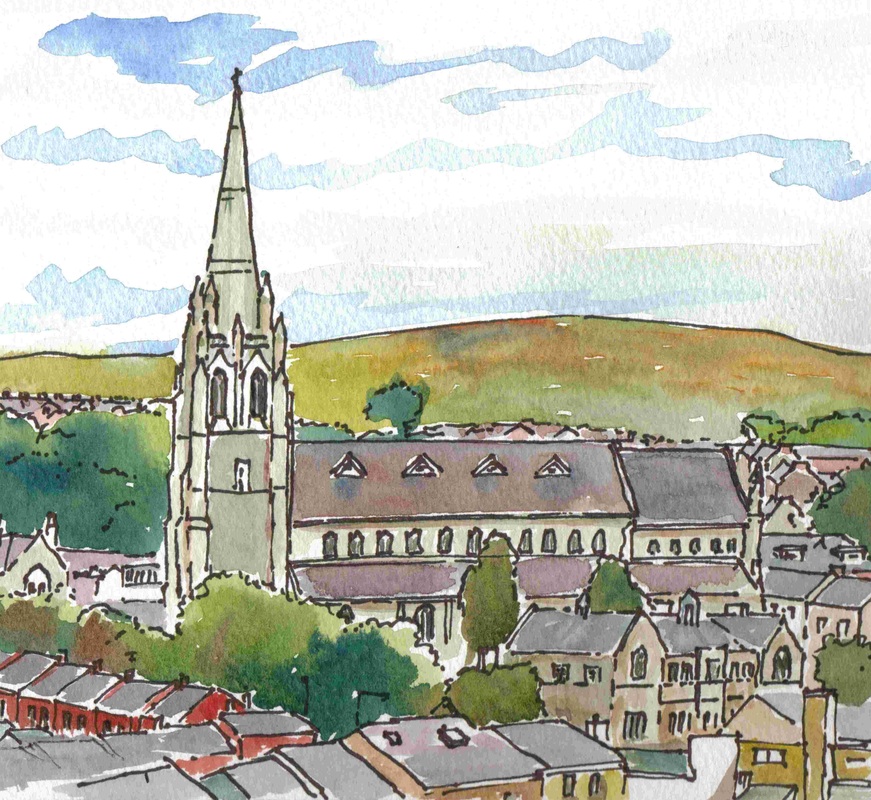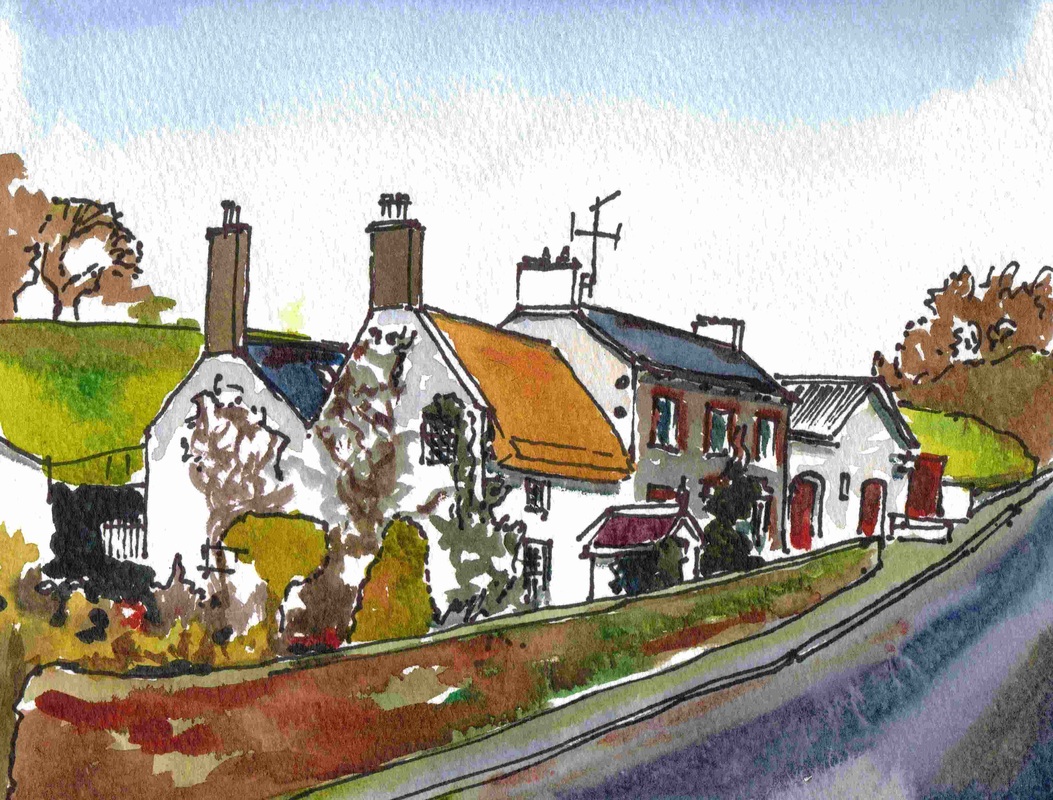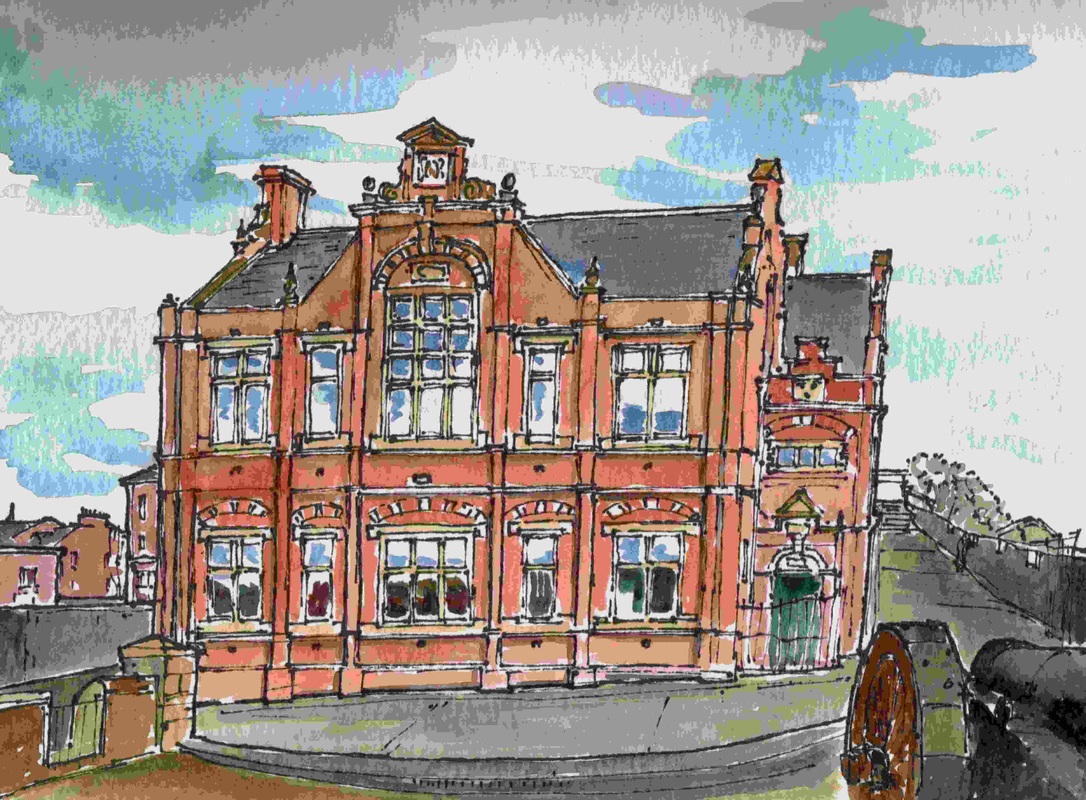Late Nineteenth Century
|
St Eugene’s Cathedral reflects a developing confidence in the Catholic Community in the second half of the century. Commenced in 1851, and helped with much financial support from emigrants in America, it was completed apart from its spire by 1873. This, and the more richly decorated pinnacles, was completed in 1903. The architect for the main work was JJ McCarthy. The spire was designed jointly by G. Ashlin of Dublin and E. J. Toye of Derry. The Cathedral was consecrated in 1936 when the debt for the works had been cleared.
In the later half of the century the standard white washed vernacular houses began to be replaced in the prosperous lowland areas by more formal buildings. A remaining thatched house near Claudy illustrates this development very well. An older 'direct entry' house has a two story formal house as an extension. The gable of the new house has projecting stones at high level- presumably to accommodate a taller replacement at a future date for the thatched portion. At the end of the century the Queen Anne Style became popular. The best example in the city is the Verbal Arts Centre on the Walls with its very typical brick pilasters and casement windows and tall chimneys. These all hark back to the buildings which must have been well represented within the walls before they were swept away by the Georgian period. The Victorian revival of the style often used terracotta replacing decorative stone details and this is the case here. |
|




